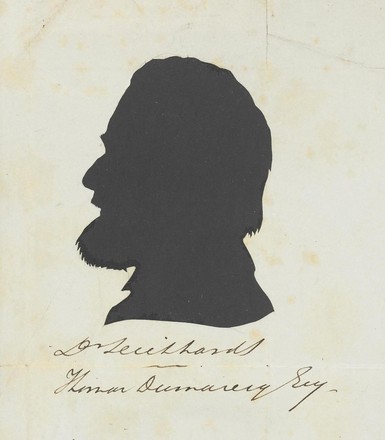A
form of paper art was the making of portrait silhouettes. The person to be
captured in the art form was seated behind white paper. A candle was lit and
placed behind the sitter who's profile was then cast onto the white paper. A
machine was used which marked and reduced the shadow. The reduced silhouettes
was cut from black paper, mounted and framed.
Silhouettes
were a cheap form of portraiture that became especially popular once Lavater’s
publications were known, being used to analyse racial and personal
characteristics supposedly perceivable in the shape of the head. Aboriginal
profiles by Fernyhough and his imitators would have provided English buyers, in
particular, with another racial type to which they could apply current phrenological
and physiognomical theories.
Richard
Neville on William Henry Fernyhough, Design & Art Australia Online, 2011
‘Esq’
– short for Esquire – denoted that Dumaresq considered himself a gentleman or a
person of rank.
A
French bureaucrat by the name of Etienne de Silhouette created this form of
portraiture in Paris, France in the mid- 1700's. Etienne was the French
Minister of Finance, and was just as well-known for cutting "shades"
of people as he was for cutting the budget to the bone.
http://www.silhouette-man.com/History.html



 Back to list
Back to list